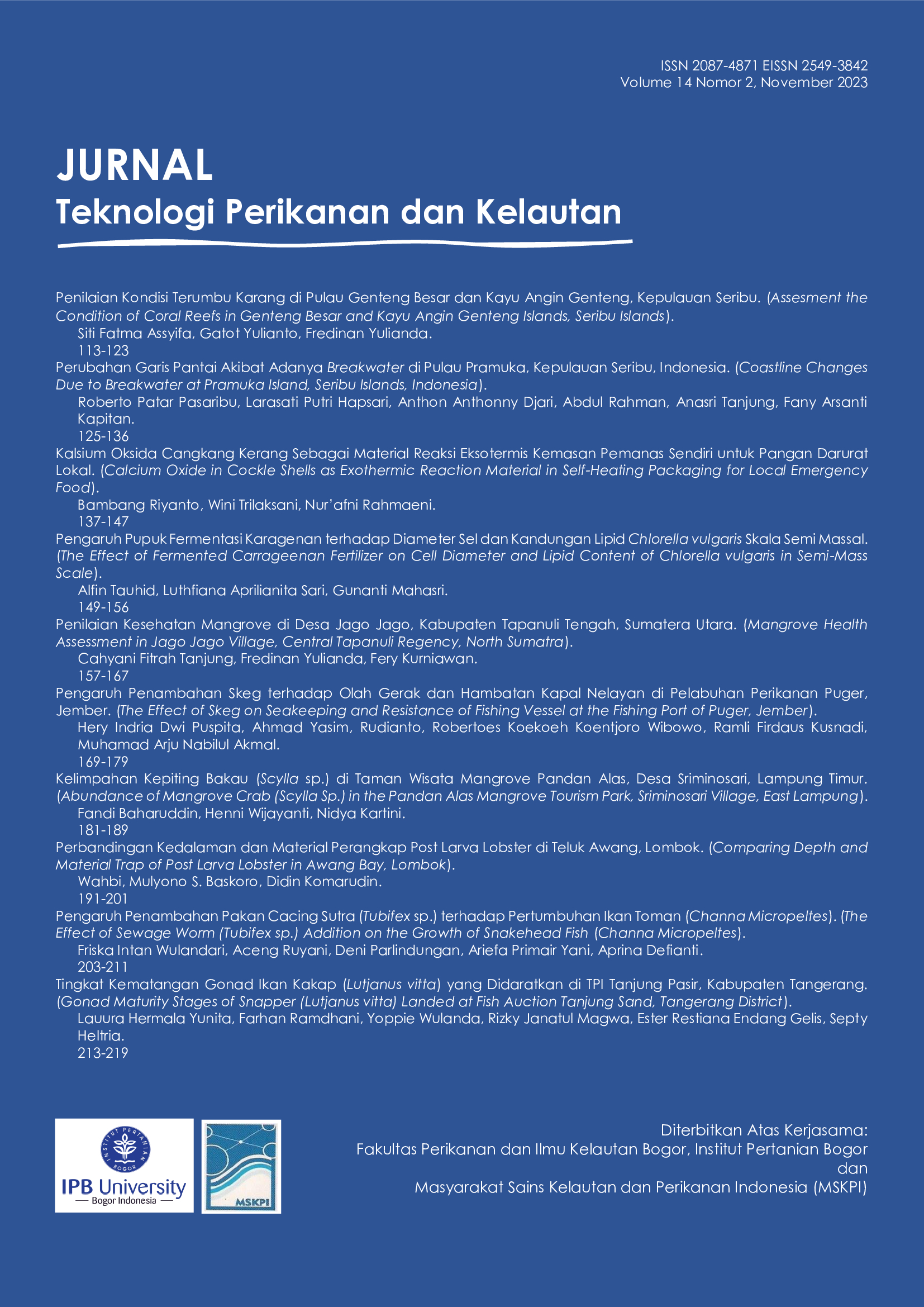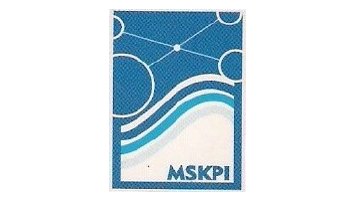PENGARUH PUPUK FERMENTASI KARAGENAN TERHADAP DIAMETER SEL DAN KANDUNGAN LIPID Chlorella vulgaris SKALA SEMI MASSAL
Abstract
Chlorella vulgaris is one of the microalgae that has the potential to be used as a raw material for biodiesel. Additionally, it is also used as a food additive and a natural feed source, so efforts to culture it are necessary to meet the availability of the C. vulgaris stock. Environmental conditions and nutrients are factors that need to be considered. One source of nutrients can be obtained from the fermentation of carrageenan. Meanwhile, environmental conditions are related to the culture system used. A semi-mass culture scale was used to increase the microalgae biomass. The study used ANOVA and Duncan’s multiple distance test with four treatments and five replications, namely: P1 (control): using a mixed fertilizer of Urea 70 ppm, ZA 40 ppm, TSP 40 ppm, EDTA 5 ppm, FeCl3 1 ppm, and NPK 5 ppm with a dosage equal to the Walne fertilizer dosage of 1 mL/L; P2: using carrageenan fertilizer fermented with a dosage of 20 ppm; P3: using carrageenan fertilizer fermented with a dosage of 30 ppm; and P4: using carrageenan fertilizer fermented with a dosage of 40 ppm. The results of the study showed that the addition of fermented carrageenan fertilizer obtained the best dosage of 20 ppm with a cell diameter of 2.79 µm and a lipid content of 45.02%.
Copyright (c) 2023 Jurnal Teknologi Perikanan dan Kelautan

This work is licensed under a Creative Commons Attribution-NonCommercial 4.0 International License.




















